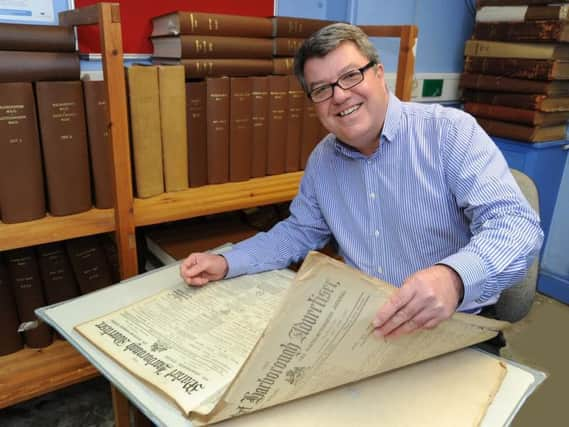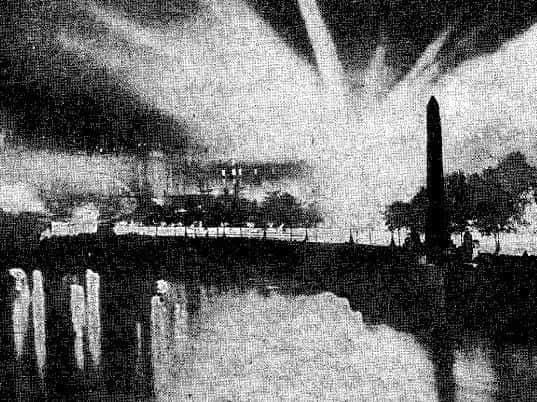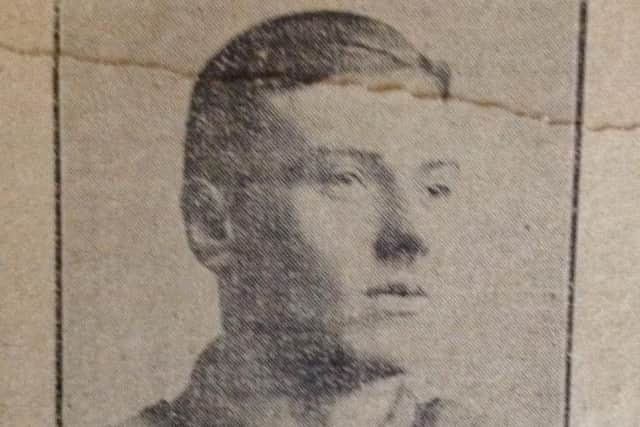John's real-time WW1 blog: Gruesome account of 14 women trampled to death in mad dash for an air raid shelter


The deaths of 14 women trampled in a stampede for an air raid shelter are described in gruesome detail in the February 5, 1918, edition of the Market Harborough Advertiser.
The town’s newspaper sticks to its now-established editorial policy of avoiding any sensationalism about the deaths of local soldiers but jumps in with tabloid gusto when the story is a national one.
Advertisement
Advertisement
This news comes from the East End of London where a crowd of a thousand people were lined up outside two neighbouring music halls waiting for the doors to open when a German air raid began.


There should have been no problems as the nearby shelter had accommodation for 8,000 people and the entrance was ‘quite wide enough for an orderly crowd’.
But the account – presumably drawn from an un-named national newspaper – pulls no punches in what happens next.
“The panic-stricken mob stormed the place and got jammed in the gateway.
Advertisement
Advertisement
“Women fell and were trampled on; others were pushed against the wall and crushed, and in addition to the 14 deaths there were many cases of injuries, including broken ribs and arms.”


The terror of the tragedy is made even more poignant by the directly quoted words of an on-duty policeman – unusual in that the Advertiser rarely includes verbatim quotations. Here though the policeman describes the terror in his own words: “In a very few seconds the wide entrance was packed with a fighting, screaming, swaying mass of people, all struggling to get into the shelter.
“Several other policemen with some specials and myself tried to stem the rush but it was like fighting a wave. In the heart of the crowd women fainted and fell; others stumbled over them and trampled them under foot.”
He adds: “For a long time the crowd stuck, wedged between the walls. Then it suddenly broke and swept down the slope to the safety shelter.
Advertisement
Advertisement
“As soon as we could get at them, the dead and injured were got out; one or two trampled horribly by the boots of the crowd.”


The air raid also provided more instances of melodramatic stories for the Fleet Street reporters, all presumably being lapped up by the Advertiser’s readers as we must assume the editor knew what they wanted.
A dogfight between the pilots of the Royal Flying Corps and the raiding enemy machines is described. “Two of our scouts encountered an enemy aeroplane over Essex. After a brief fight at close range the raider took fire and fell in flames to the ground 10,000ft below.”
The story adds – with it seems some relish: “All three members of its crew were burnt to death.”
There are also other human interest stories:


Advertisement
Advertisement
- A sleeping man who cheated death even though his house was hit by a bomb and the bed he was lying in ‘was carried down by the falling debris’.
- A bomb fell down the chimneys between two terraced houses causing considerable damage – but remarkably the eight children in the homes were unharmed.
- Another bomb landed in the pavement directly outside a school – a wall was blown in and ‘practically all the windows were broken’ – but only five people received superficial injuries.
There is some brief news of Market Harborough men who have died. There is a photograph of Farrier Staff Sergeant Palmer, a former landlord of the Talbot Hotel, whose death was described in more detail in the January 22, 1918, edition of the Advertiser.
Advertisement
Advertisement
And there is also the sad news of Private J Gilbert of Fairfield Road who died of a ‘fractured spinal column’. Twenty-year- old Gilbert had only been in France a matter of weeks: he had been discharged from hospital on Christmas Eve after being wounded earlier in 1917.
- This column is published every Monday by John Dilley on the Newspapers and the Great War website and will continue until the 100th anniversary of the final armistice in November 2018.
- My fellow researcher and De Montfort University lecturer David Penman is conducting a similar real-time project with the Ashbourne Telegraph. Check out his Great War Reports.
- Check out this week’s Harborough Mail for current news from the Market Harborough area.